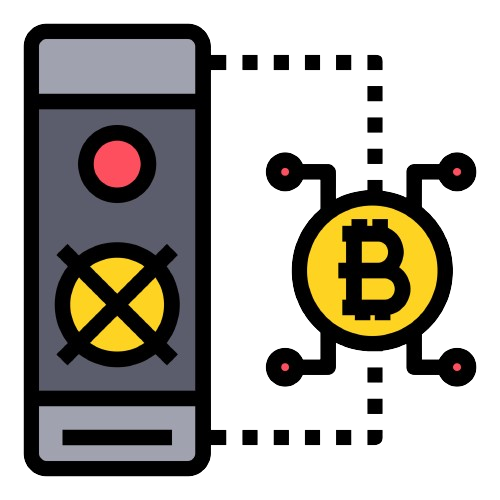
Since its inception, Bitcoin has undergone changes and upgrades to its underlying protocol through software forks. These forks have aimed to enhance aspects like transaction speed, block size, hashing algorithm, and other functionality. While most forks are seamlessly adopted, some result in branching into separate cryptocurrencies, collectively referred to as Bitcoin forks.
But what exactly qualifies as a Bitcoin fork? How is it different from a regular protocol upgrade? This article provides an in-depth explainer on Bitcoin forks – their mechanism, rationale, types of forks, and examples like Bitcoin Cash and Bitcoin Gold. Understanding forks is key to grasping the evolution of Bitcoin and the broader cryptocurrency ecosystem.
What is a Bitcoin Fork?
A Bitcoin fork refers to a change in the underlying protocol that results in two divergent blockchains and networks. One continues as Bitcoin while the other branches off as a new cryptocurrency with a shared history up till the fork. A fork splits miners and nodes between two competing networks. It is essentially an alternate software implementation with its blockchain, rules, and ecosystem. The new currency formed is termed a “fork” since it stems from the original Bitcoin codebase.
Forks represent significant events for networks. They have a lasting impact on the roadmap, community, and adoption of both the original and forked cryptocurrency.
Types of Bitcoin Forks
There are two primary types of forks:

Hard Fork – Makes substantive changes that break backward compatibility. Nodes must upgrade to new software or be excluded from the upgraded network. If some nodes continue on the original chain, a permanent blockchain split occurs.
Soft Fork – This entails minor technical changes that are backwards compatible. Only miners must upgrade while nodes can continue seamlessly without upgrading yet. Does not inherently lead to a split unless activated controversially.
In practice, most forks have been hard forks resulting in new currencies.
When Does a Bitcoin Fork Happen?
There are a few scenarios that commonly trigger Bitcoin forks:
– To reverse major hacks and thefts through protocol rollbacks
– Disputes over proposed protocol upgrades lead to competing implementations
– Desire to create an alternate cryptocurrency with different features
– Governance disagreements among developers and miners
The new fork then competes for hash power with the original blockchain. The fork with greater adoption and mining power becomes the dominant chain.
Key Drivers for Bitcoin Forks
There are mixed motivations behind forking Bitcoin:
– Adding new features not supported on the main Bitcoin network like larger blocks
– Preserving technical aspects like hashing algorithms against changes
– Reversing transactions after hacking incidents to recover funds
– Disagreements over Bitcoin’s roadmap and ideals
– A desire for greater mining decentralization
– Escaping perceived censorship in the main Bitcoin community
Both technical and political considerations are often at interplay during forking decisions. This leads to complexities in navigating community fragmentation.
Notable Bitcoin Forks
Here are some prominent examples of Bitcoin forks over the years:

Bitcoin Cash (BCH) – Forked in mid-2017 to increase block size from 1MB to 8MB enabling higher transaction throughput. Has significant community support.
Bitcoin Gold (BTG) – Forked in late 2017 to move mining from ASICs to GPUs aiming to democratize mining. But faced centralization issues.
Bitcoin SV (BSV) – Forked from Bitcoin Cash in 2018 and increased block size further to 128MB. Led by Craig Wright.
Bitcoin Private (BTCP) – 2018 fork to add privacy by leveraging Zk-snarks from Zcash along with faster blocks.
These forks represent past technical disagreements within the Bitcoin community leading to competing visions. This fragmented ecosystem continues evolving further.
The Mechanism of a Bitcoin Fork
A Bitcoin fork works through the following key steps:
Fork Proposal – New features or changes incompatible with current rules are proposed requiring a fork. Significant developer dissent begins emerging.
Competing Clients – Groups on both sides implement their version of Bitcoin software to align with their stance regarding the proposal.
Chain Split – At the block height the change activates, and the network splits into two competing chains and currencies.
Coexistence – Both chains now move ahead simultaneously with disjoint communities, prices, and applications. Either may die out long-term if it loses sufficient adoption.
Understanding this mechanism provides insight into the challenges of coordinating blockchain upgrades across decentralized networks. Disagreements can readily spiral into permanent community splits.
Impacts of a Bitcoin Fork
Bitcoin forks have significant technical, commercial, and community implications:
– Network disruption and reduced security as hash power splits across chains.
– Replay attacks are possible between chains unless protection is added.
– Exchanges need to handle listings for both assets. Custodians face customer service issues.
– Token holders receive equivalent balances on both chains, essentially an asset multiplier.
– Can revive community engagement by catering to differing technical philosophies.
– But also risks permanent splits diluting the Bitcoin brand long-term.
Managing risks requires coordinated efforts between developers, miners, exchanges, and other stakeholders during politically contentious forks.
Forks vs Chain Splits
The term “fork” is sometimes used interchangeably with “chain split”. However, there are subtle differences:

Forks require alternate software implementations while splits can occur between nodes running the same software.
Splits can arise out of factions fighting for a single blockchain rather than wishing to create a new currency.
All forks lead to chain splits by the nature of creating two blockchains. But splits are not necessarily the result of software forks.
Despite nuances, “fork” is widely used in a general sense when subsidiaries emerge from the main Bitcoin network.
Future Potential Forks
Going forward, some potential triggers for new Bitcoin forks include:
Move from proof-of-work to proof-of-stake mining draws closer. Conservative supporters may fork to keep proof of work.
Sharding to scale Bitcoin to thousands of transactions per second on the roadmap could lead to a fork by rejecting groups.
Integrating privacy-enhancing features like Confidential Transactions or stealth addresses resisted by certain users.
Transitioning mining algorithm from SHA-256 to a quantum-resistant hash if quantum computing emerges.
Raising the 21 million coin limit through changes to the emission schedule would be staunchly opposed.
As technology and network needs evolve, Bitcoin is likely to face more forking controversies that will shape its future.
Managing Bitcoin Forks
For ordinary owners of Bitcoin stored in wallets like Bitcoin Wallet, typical advice around forks includes:
– Avoid transacting shortly before and after the fork block to mitigate replay risks.
– Back up the wallet and export private keys to safely access forked coins.
– Split coins by transacting on each chain after the fork if pursuing both assets.
– Closely track developer communications around consensus rule changes.
Be aware of risks like chain reorganizations, reduced security, and scams trying to capitalize on fork confusion.
Staying prudent enables making the most of forks while avoiding pitfalls for non-technical users.
Conclusion
Bitcoin forks represent landmark events in the evolution of blockchain technology. While most system upgrades are backwards-compatible “soft” forks, “hard” forks that create entirely new currencies have dominated Bitcoin’s history until now. Driven by technology enhancements or political disputes, forks illustrate the challenges in transitioning to a decentralized network.
Managing the ensuing instability and disruption requires coordinated efforts. From development to mining and regulation, many problems arise. However, when communities share an open spirit, forks can present opportunities to experiment with new ideas and visions in the cryptocurrency ecosystem. As Bitcoin keeps growing, future forks will likely occur sparking both challenges and possibilities. Understanding the what, how, and why of Bitcoin forks can provide deeper insight into this complex but integral phenomenon.